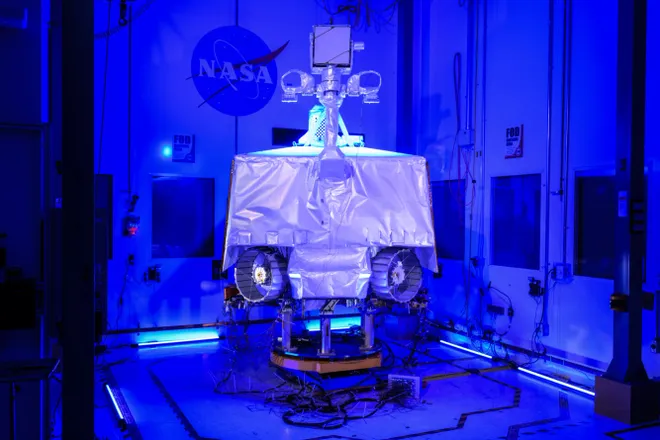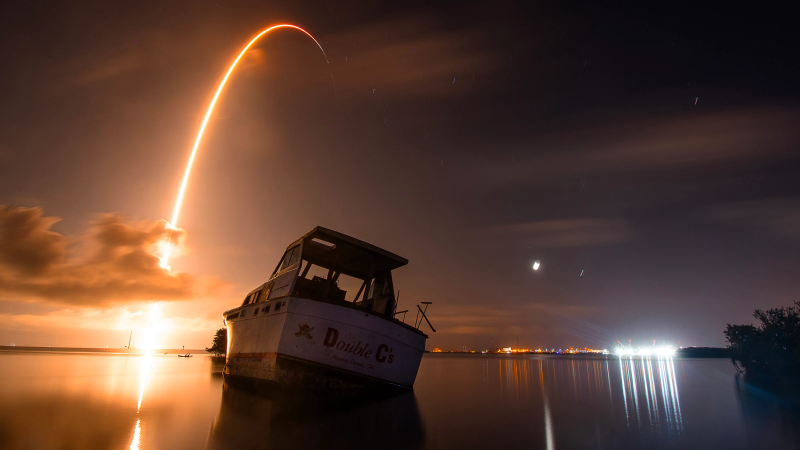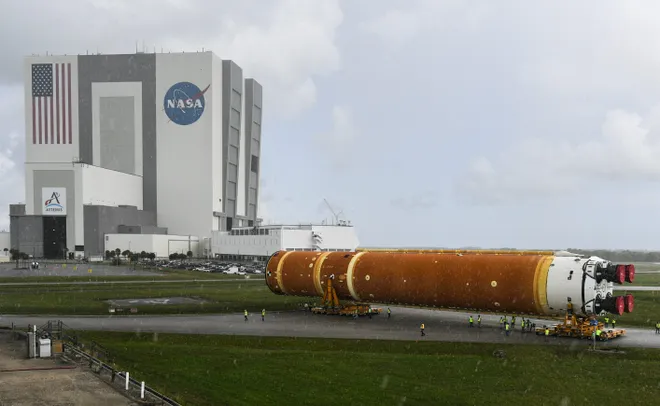US, China compete to study water on the moon: Why that matters for future missions
The race is heating up among space agencies around the world to get to the moon, where astronauts hope to one day establish basecamps of sorts for future expeditions to Mars.
Yes, it's not unthinkable that humans could in the years ahead journey all the way to the Red planet, where so far only rovers and orbiters have dared to venture. But before that can happen, space agencies like NASA need to ensure that the right conditions exist on Earth's sole natural satellite to establish lunar settlements.
And one crucial component to make outposts on the moon feasible? The presence of water.
For years, NASA had been developing and preparing a rover designed to find and study water ice on the moon's mysterious south pole, where the substance is thought to be abundant. The half-billion dollar price tag for its Volatiles Investigating Polar Exploration Rover, or VIPER, was thought to be well worth the investment to essentially conduct reconnaissance ahead of future crewed missions.
Then in July, the unexpected happened: $450 million and multiple delays later, NASA scuttled the VIPER launch altogether.
In a press release, the U.S. space agency promised it was still dedicated to exploring the moon as part of its ambitious Artemis campaign – NASA's first lunar program since the Apollo era. But the setback came as China, a major lunar competitor, seeks to become a dominant spacefaring force in its own right.
Last month, Chinese scientists analyzed soil samples that the nation's lunar probe brought back in 2020 to find water and other minerals in the soil – a potentially groundbreaking discovery that could have implications for lunar habitation.
Here's what to know about the international race to study water on the moon ahead of crewed lunar missions.
Studying the moon:What sustains the lunar exosphere? Being 'bombarded' by meteorites, study says

What to know about NASA's VIPER
Space agencies across the world view the moon as a valuable destination due to the resources it provides to aid further deep space exploration.
For the United States, American astronauts have not set foot on the moon since the last Apollo mission in 1972. NASA's Artemis program hopes to return the nation back to the lunar surface in order to establish a base of operations ahead of crewed trips to Mars.
The water ice thought to be present in the unexplored lunar south pole, where NASA plans to one day land its astronauts, would not only help sustain them on the surface, but it also would be a source of hydrogen and oxygen for rocket fuel.
Ahead of those crewed missions, NASA had planned to send its robotic VIPER on a 100-day mission to explore the moon's south pole to locate, record and map images of water ice.
VIPER was originally targeted for launch in late 2023, but the mission was first pushed back to 2024 before it was once again delayed until 2025. On July 17, NASA decided to cancel VIPER's journey due to rising costs, delays and potential disruptions to other commercial payload missions to the moon.
In a move protesting the decision, the Planetary Society, a nonprofit organization promoting space exploration, circulated a letter signed by more than 1,000 individuals addressed to more than 200 congressional staffers. Calling NASA's decision "both unprecedented and indefensible," the letter urged Congress to intervene, emphasizing the importance of VIPER for future lunar exploration.
But before NASA disassembles and reuses VIPER’s parts for other lunar missions, it has offered a chance to revive the rover's hopes of liftoff: Commercial space companies were given the chance to submit proposals to NASA by last Thursday with ideas for how the project could be saved.
Meanwhile, the possibility remains that lawmakers in Washington, D.C. – who have already raised public concerns that China could beat the U.S. back to the moon – could intervene to reverse NASA's decision, CNN reported this week.
China lunar probe brings back soil samples
Around the same time that NASA closed the door on VIPER, Chinese scientists who analyzed lunar soil samples collected by the nation's Chang’e-5 probe in 2020 unveiled the presence of water.
Published July 16 in the journal Nature, the findings were the first time that water in its molecular form, H2O, had been found in physical lunar samples.
While it may be still too early to tell if the discovery will alter plans for future resource extraction or the location of lunar bases, it was the latest lunar breakthrough for a nation hoping to send its own astronauts to the moon by 2030.
Two months earlier, China had launched its Chang’e-6 lunar probe as it sought to become the first nation to ever retrieve samples from the far-side of the moon. That ambitious mission comes years after China completed its latest orbital space station, the Tiangong – a rival to the International Space Station, which will in the coming years be retired.

What to know about Artemis and US' return to moon
Fortunately, VIPER is not the only NASA-led project designed to search out water on the moon ahead of the arrival of astronauts.

For instance, NASA has hired three companies to create preliminary designs for lunar vehicles that can be driven and can also operate autonomously on the moon's surface to allow for scientific tests and exploration even when astronauts are not there.
NASA is also paying private companies billions of dollars to carry scientific payloads on private robotic landers bound for the moon, one of which –the Polar Resources Ice Mining Experiment-1 (PRIME-1) – is scheduled to land at the south pole by the end of 2024 to search for water ice.
“The agency has an array of missions planned to look for ice and other resources on the moon over the next five years,” Nicola Fox, associate administrator of NASA’s Science Mission Directorate, said in a statement. “Our path forward will make maximum use of the technology and work that went into VIPER.”
Artemis has been mired in delays and controversy as elected officials and other aeronautics experts have expressed concerns about the scope and cost of the ambitious program.
NASA had intended to launch its Artemis II astronauts into orbit by the end of the year on a 10-day trip circumnavigating the moon, ahead of a moon landing itself in 2025 for Artemis III. But both Artemis missions have since been delayed by at least a year after NASA encountered a slew of issues, including a battery flaw on the vehicle that will ferry astronauts to the moon.
In the meantime, preparations have continued to ensure the program stays on track.
In mid-March, SpaceX conducted its most successful test yet of the Starship rocket that will one day ferry U.S. astronauts to the moon's surface. NASA had awarded the company a $2.9 billion contract in 2021 to develop the first commercial human lander for its Artemis III mission.
Eric Lagatta covers breaking and trending news for USA TODAY. Reach him at elagatta@gannett.com
Disclaimer: The copyright of this article belongs to the original author. Reposting this article is solely for the purpose of information dissemination and does not constitute any investment advice. If there is any infringement, please contact us immediately. We will make corrections or deletions as necessary. Thank you.





